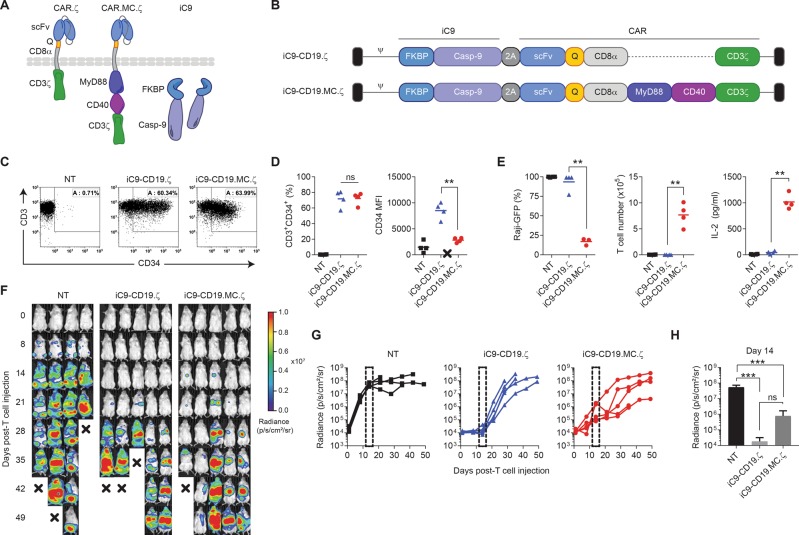Fig. 1.
MC domains expressed in cis with CD3ζ provide costimulation but lower CAR activity. a, b Schematic comparing a conventional first-generation CAR with an enhanced CAR, including the signaling domains from MC, expressed in cis with the CD3ζ intracellular domain. These bicistronic vectors also express iC9 in the first position of the retroviral vector. c, d CD3+CD34+ expression using flow cytometry was used to measure the transduction efficiency and CAR mean fluorescence intensity (MFI). e Potency of non-transduced (NT) T cells or T cells modified with either iC9-CD19.ζ or iC9-CD19.MC.ζ were assessed in 7-day coculture assays with CD19+ Raji-EGPFluc tumor cells at a 1:1 effector-to-target (E:T) ratio. Tumor and T-cell frequency (%) were analyzed by flow cytometry, and IL-2 production was assessed by ELISA after 48 h of coculture. f, g Immune-deficient NSG mice were engrafted with CD19+ Raji-EGFPluc tumor cells on day 0 via tail vein injection and subsequently treated with NT, iC9-CD19.ζ, or iC9-CD19.MC.ζ-modified T cells on day 4 post-tumor injection. Mice were assessed by bioluminescence imaging (BLI) on an approximately weekly basis to determine tumor growth and CAR-T cell activity. h Analysis of tumor BLI was assessed on day 14 post-T-cell injection. ** represents P-value < 0.01; *** represents P-value < 0.005

